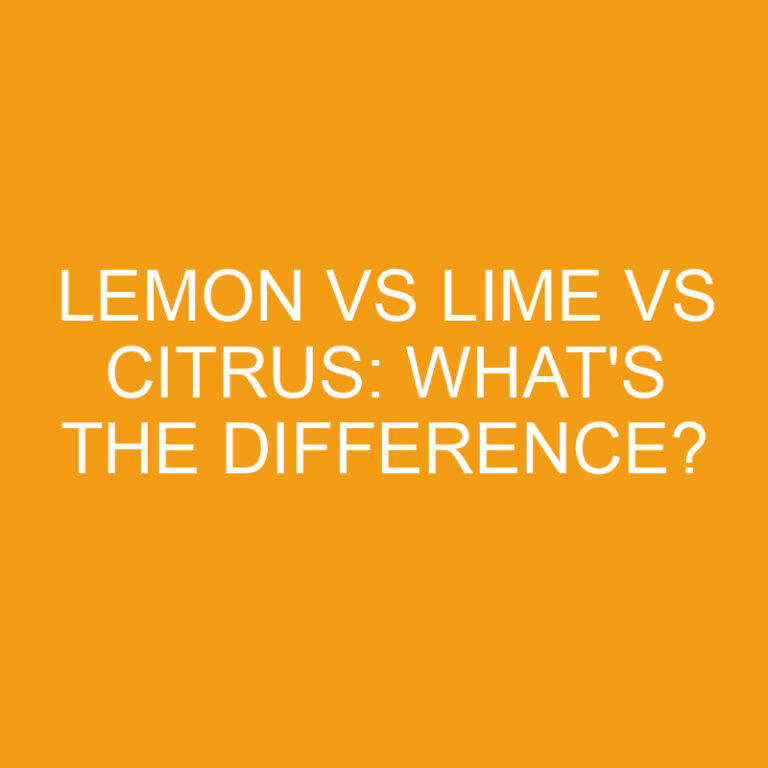
As a beer enthusiast, I often find myself exploring the vast world of ales. One common question that arises is the difference between ale and pale ale. Understanding these two popular beer styles can enhance your appreciation for the diverse flavors in the craft beer scene.
Ale is a broad category that includes various beer styles, with pale ale being one of the most well-known variations. While both ales and pale ales are top-fermented beers, they differ in terms of color, flavor profile, and brewing techniques. Delving into the nuances of ale and pale ale can help you navigate the beer menu with confidence and discover new favorites.
In this article, I’ll break down the key distinctions between ale and pale ale, shedding light on their unique characteristics and guiding you towards making informed choices when selecting your next brew. Let’s unravel the mystery behind these beloved beer styles and elevate your beer knowledge to new heights.
Post Contents
Key Takeaways
- Ale is a broad category that encompasses various beer styles, while pale ale is a specific type known for its light amber to deep golden color and balanced flavors.
- The color of ale can range from light gold to dark brown, whereas pale ale is characterized by its light amber to deep golden hues.
- Ales offer diverse fruity, spicy, and malty flavors, while pale ales have a balanced profile with moderate hop bitterness and noticeable malt presence.
- Both ale and pale ale use top-fermenting yeast strains at warmer temperatures, but pale ales may include additional steps like dry hopping to enhance hoppy aroma.
- Pale ales are well-loved for their pale color, balanced maltiness, hop-forward flavors, and moderate bitterness.
- Ales and pale ales have distinct tasting notes, with ales offering a wider flavor profile including fruity esters, spicy phenols, and rich malt characteristics, while pale ales feature pronounced hoppy flavors ranging from subtle to intense.
Understanding Ale and Pale Ale
When it comes to ale and pale ale, it’s essential to grasp the nuances that set these two beer styles apart. Ale is a broad category that encompasses various beer types, all fermented at warmer temperatures using top-fermenting yeast. On the other hand, pale ale is a specific type of ale that is known for its pale golden to amber color and balanced flavors.
Here are some key points to help distinguish between ale and pale ale:
- Color: While ale can range from light gold to dark brown hues, pale ale is characterized by its light amber to deep golden color, imparted by the use of pale malts during brewing.
- Flavor Profile: Ale typically offers a diverse range of flavors, including fruity, spicy, and malty notes, depending on the specific style. In contrast, pale ale is known for its balanced profile, with a moderate level of hop bitterness and a noticeable malt presence.
- Brewing Techniques: The brewing process for both ale and pale ale involves top-fermenting yeast strains that operate at warmer temperatures. However, pale ale may include additional steps such as dry hopping to enhance its hoppy aroma.
Understanding the distinctions between ale and pale ale can enrich your appreciation for the diverse array of flavors and styles present in the world of craft beer. Whether you prefer the complexity of traditional ale or the approachable nature of pale ale, exploring these beer varieties can lead to new taste experiences and a deeper understanding of brewing techniques.
Origins and History
When exploring the origins of ale and pale ale, it’s fascinating to delve into the rich history of these beloved beer styles. Ale has been brewed for centuries, tracing its roots back to ancient civilizations where it was a staple beverage. As one of the oldest forms of beer, ale is deeply ingrained in brewing traditions worldwide.
On the other hand, pale ale has a more recent history compared to the broader ale category. It emerged in the 18th century as a response to the demand for lighter-colored and more balanced beers. The development of pale ale marked a significant shift in brewing techniques and paved the way for the diverse range of beer styles we enjoy today.
Over the years, both ale and pale ale have undergone evolution and innovation, adapting to changing tastes and preferences. From traditional brewing methods to modern craft techniques, these beer styles continue to captivate beer enthusiasts with their heritage and versatility.
Exploring the historical context of ale and pale ale provides a deeper appreciation for the craftsmanship and artistry that go into brewing these iconic beverages. By understanding their origins and evolution, we gain insights into the cultural significance and enduring popularity of ale and pale ale in the vibrant world of craft beer.
Characteristics of Ale
When it comes to ale, there are several key characteristics that distinguish it from other types of beer. First and foremost, ales are brewed using top-fermenting yeast strains which tend to ferment at warmer temperatures. This process results in a quicker fermentation compared to lagers.
The flavor profile of ales often includes fruitiness and complexity, attributed to the variety of malt and hops used during brewing. Ales can range from light and crisp to dark and robust, accommodating a wide spectrum of tastes for beer enthusiasts.
One of the defining characteristics of ale is its wider range of styles compared to lagers. From Belgian ales to English ales and American ales, there is a diverse selection within the ale family catering to different preferences.
Additionally, ales are typically fermented at warmer temperatures between 60-72°F (15-22°C) compared to lagers, which are fermented at cooler temperatures. This warmer fermentation process contributes to the unique flavors and aromas found in various types of ales.
Characteristics of Pale Ale
When it comes to Pale Ales, they are known for their pale color and refreshing taste. These ales are well-loved for their balance of maltiness and hoppiness, creating a harmonious flavor profile. Here are some key characteristics of Pale Ales:
- Color: Pale Ales have a light amber to golden color, giving them a visually appealing appearance.
- Maltiness: They often exhibit a moderate malt sweetness, providing a solid base for the hops to shine.
- Hoppiness: Pale Ales are characterized by their hop-forward flavor, with citrusy, floral, or piney notes that can vary depending on the specific hop varieties used.
- Bitterness: While Pale Ales are moderately bitter, the bitterness is balanced by the malt sweetness, creating a pleasant drinking experience.
- Aroma: These ales boast aromas of hops that can range from subtle and earthy to bold and aromatic, enticing the senses with each sip.
Overall, Pale Ales are a fantastic choice for beer enthusiasts looking for a well-rounded brew that combines the best of both malt and hops. Their versatility and approachable nature make them a popular choice for both seasoned beer connoisseurs and newcomers to the craft beer scene.
Tasting Notes and Flavor Profiles
When it comes to tasting notes and flavor profiles of ales and pale ales, there are some key differences to note. Ales typically offer a range of flavors that can include everything from malty sweetness to hoppy bitterness, depending on the specific style. On the other hand, Pale Ales are known for their distinct hop-forward flavors with citrusy, floral, or piney notes that give them their characteristic taste.
Here are a few key points to consider when discerning the differences in tasting notes between ales and pale ales:
- Ales often have a diverse flavor profile that can include fruity esters, spicy phenols, and rich malt characteristics.
- Pale Ales are characterized by their hoppy flavors, which can range from subtle to intense depending on the specific type of hops used in the brewing process.
- Ales may exhibit a wide range of colors, aromas, and flavors, making them a versatile choice for beer enthusiasts.
- Pale Ales, with their signature hop-forward taste, are a popular choice for those who enjoy a more pronounced bitterness in their beer.
Overall, the distinction between ales and pale ales in terms of tasting notes lies primarily in the balance of malt sweetness and hop bitterness. While ales offer a broader spectrum of flavors, pale ales are specifically crafted to highlight the unique characteristics of hops in a more pronounced manner. By understanding these nuances, beer enthusiasts can better appreciate the diversity and complexity of the ale family.
Conclusion
Ales and Pale Ales offer a diverse spectrum of flavors and aromas, catering to different preferences in the beer world. Ales boast fruity esters, spicy phenols, and rich malt profiles, providing a complex tasting experience. On the other hand, Pale Ales shine with their hop-forward characteristics, delivering a bold bitterness that appeals to hop lovers. The interplay between malt sweetness and hop bitterness creates a unique balance that defines the essence of these beer styles. Whether you lean towards the fruity complexities of ales or the hoppy intensity of Pale Ales, exploring both varieties can broaden your beer palate and deepen your appreciation for the art of brewing.
Frequently Asked Questions
What are the key differences between ales and pale ales?
Ales showcase fruity esters, spicy phenols, and rich malt profiles, while Pale Ales feature hop-forward flavors with citrusy, floral, or piney notes.
What makes ales unique in terms of flavors?
Ales offer a diverse range of colors, aromas, and flavors, catering to beer enthusiasts looking for variety and complexity in their drink.
Why are Pale Ales known for their bitterness?
Pale Ales are favored for their pronounced bitterness, highlighting the distinctive qualities of hops in the brewing process.
How can one appreciate ales better?
Understanding the balance between malt sweetness and hop bitterness is crucial in fully appreciating the intricate and varied flavors found in ales.






